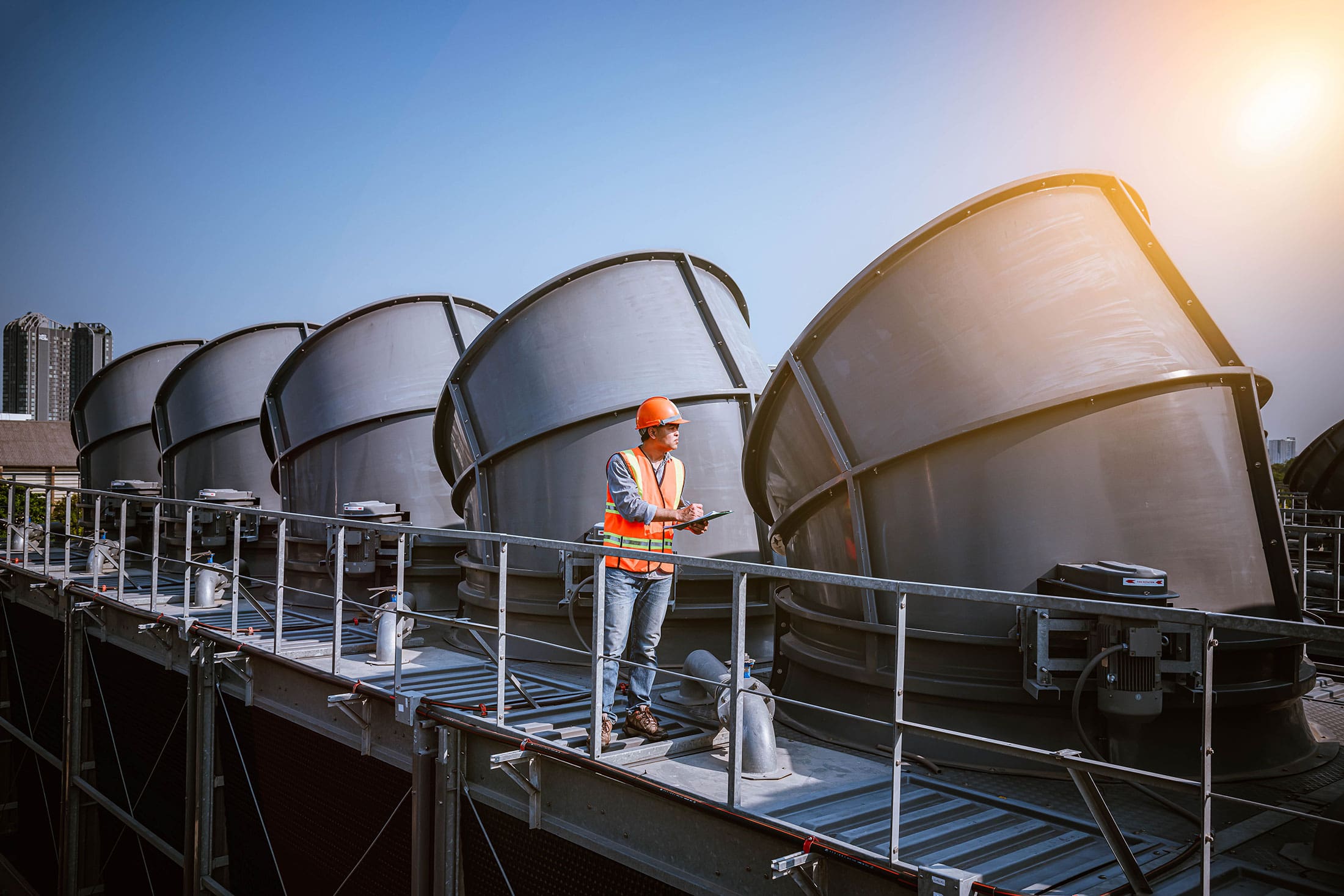
June 5, 2018
Without going into a lot of detail, an energy management project normally begins with an appointment and a walk-through of a client’s facilities. Things such as lighting, heating and cooling systems, production processes, and schedules are discussed and notes are taken for possible Energy Management Opportunities (EMOs). Later, if the owner is receptive to the idea of saving money (and who isn’t?), more detailed studies and measurements are needed. That’s where the TAB engineer and technicians become integral parts of the process.
Once there is agreement and permission for the more detailed studies, TAB technicians and their equipment are put into action with a list of readings to take as well as logged information to retrieve. If the owner’s BAS does not have the logging capability, then the TAB company should have on hand or provide whatever instrumentation is needed. Temperature/humidity, power, runtime, and flow loggers are typical items needed for minimal studies. The EMP and TAB personnel must work together to develop a detailed scope of work for gathering the basic data.
Since some of the systems located in the facility being studied had neither been re-commissioned nor retro-commissioned in the operating life of the systems, TAB engineers were beginning at “0”. Changes to the systems, operating modes, and parts failures without replacement of BAS generated the need for taking all basic measurements. Original start-up and TAB reports were virtually useless. The various measurements required for an accurate estimate of possible savings (EMOs) were taken and provided to the Energy Management Firm.
The Energy Management Firm used the information provided by the TAB firm in order to develop a proposal for an EMP (Energy Management Project) to the owner. Their findings indicated the potential for substantial savings by retro-fitting antiquated equipment and controls, as well as lighting upgrades. The owner accepted the proposal and from that came a TPO (TAB Project Opportunity) for the TAB firm.
Construction of this facility has spanned a period of 40 years with the most recent project having been completed five years ago. The original electro-pneumatic controls system had been mostly demolished in every building– “mostly” because the pneumatic piping had been removed but the damper and valve operators were not. So, the outside air/return dampers and end point valves had been locked in position for about 15 years. The Electro/Pneumatic devices controlling the main CHW and HW valves had been changed to DDC. Although some of the EMCS had been modernized, they were lacking at least five upgrades to their program. From all practical aspects, this complicated system was being operated in “hand” position.
The chilled water cooling system utilized a central chiller plant with condenser pumps, primary and secondary pumps provided the cooling tower and main loop flows, and tertiary pumps provided flow for each building. Similarly, the heating loop initially utilized central boilers with primary/secondary/tertiary pumping schemes.
Modifications to the HVAC operating scheme in recent years involved the removal of the buildings from the central energy plant boiler and the installation of smaller boilers serving each of the buildings. The chilled water equalizing bridges in each building were removed, thereby changing the arrangement of all of the building pumps from tertiary to series installation. They were acting as boosters for the secondary pumps. Neither the heating nor cooling systems had been re-balanced following these changes.
Under the new design, chilled water tertiary pumps would be replaced with venturi flow devices which are controlled by differential pressure.
Secondary chilled water pumps were up-sized from the original design in order to overcome the loss of capacity from the removal of the tertiary pumps.
Adding to the concerns regarding removal of the tertiary pumps was the amount of diversity designed into the original system–75%. Changes to the initial occupancy schedules, summer weather, and periodic full-occupancy of buildings not included in the initial diversity calculations bring the initial design capacities into question.
At full load, there is a 200 GPM differential between the primary chiller flow (700 GPM) and the secondary loop flow (900 GPM) which introduces a mixing effect in the district supply at its connection to the hydraulic bridge.
The question then becomes at what delivery temperature the chiller should be set in order for the mixed system to provide 45°F design temperature to the secondary loop. The primary system is constant flow and the secondary system is variable. For the purposes of this article, we’ll consider only full-load conditions. The formula for determining the final mixed water temperature of two streams is: Tm=(M1C1T1 +M2C2T2)/M1C1+M2C2. Assuming clear water with equal specific heat, then we will be mixing 700 gallons of water at “x” temperature with 200 gallons of water at 57°F to produce 900 gallons of water at 45°F(Tm). The formula then becomes: 45°F=(700xT1)+(200 x 57)/(700)+(200). Solving for the formula gives the result of 41.57°F being the new chiller delivery set point (Tm) for full load. The chillers are two-stage and will load/unload as controlled by their onboard sensors.
The secondary loop pumps are controlled by differential pressure. Chillers will be set at the 41.57 temperature until practical tests under full-load conditions can be conducted.
Differential pressure set point will be determined during TAB hydronic balancing procedures.
Since some of the buildings are two-pipe arrangements and others are four-pipe, the calculations for the chilled water system will be tested the following summer. Chiller and pump flows will be balanced and coil performance tests will take place under loaded conditions the following summer. The boiler systems will be balanced under load conditions in the following winter. The TAB contractor will work closely with the Energy Management Firm to log and trim the systems over the next several months in order to maximize efficiency and decrease energy use.

